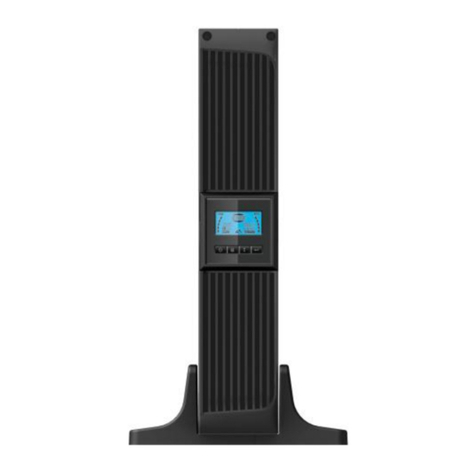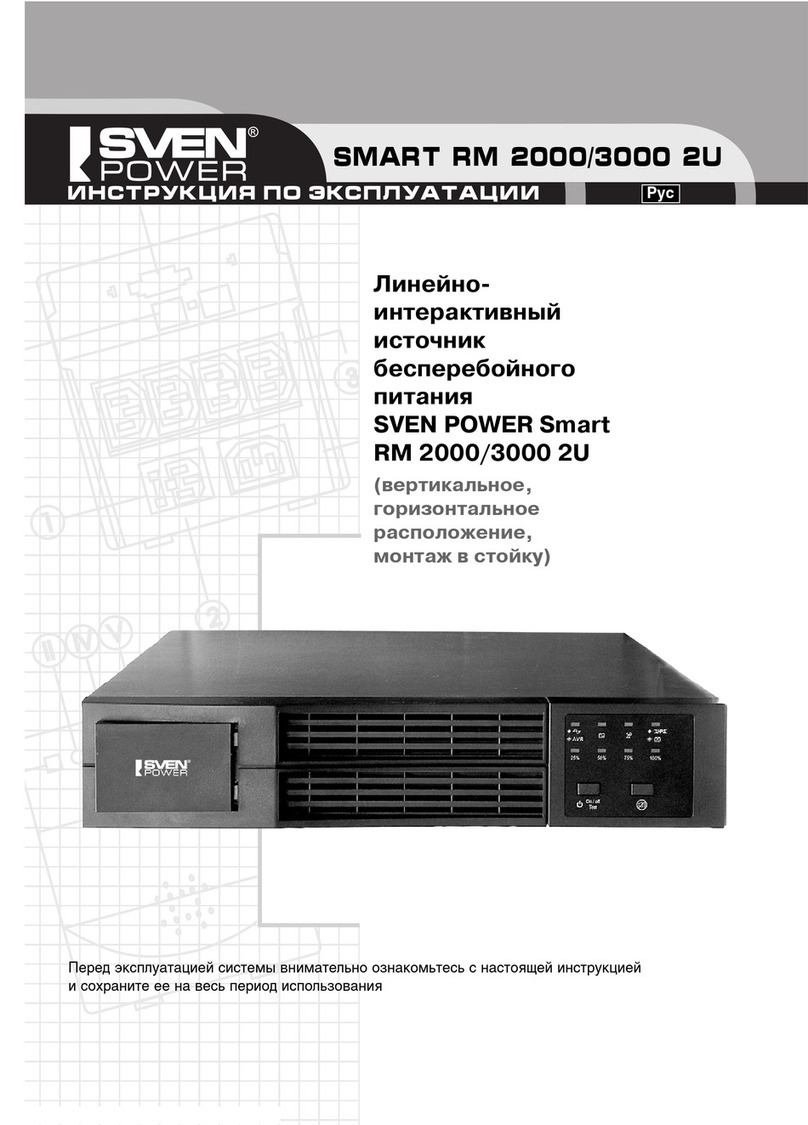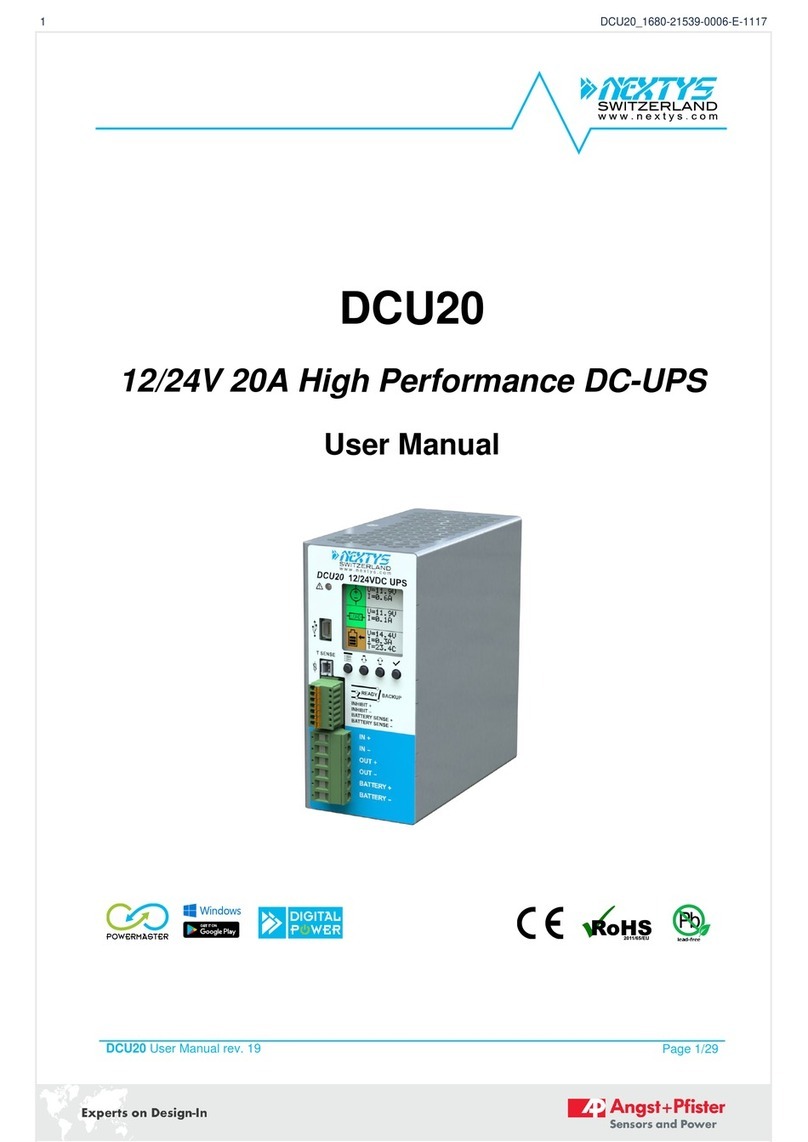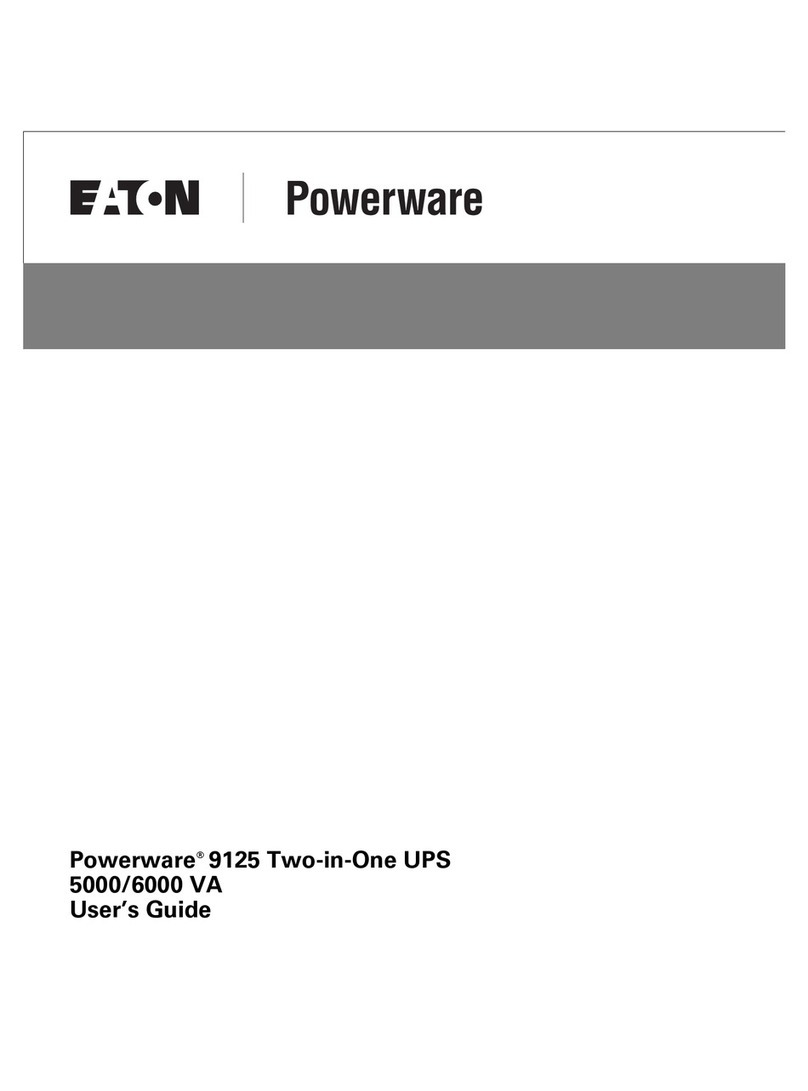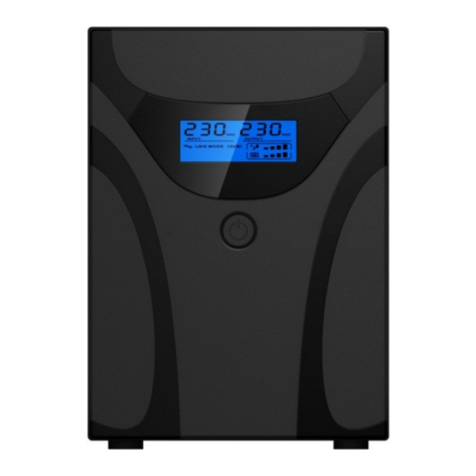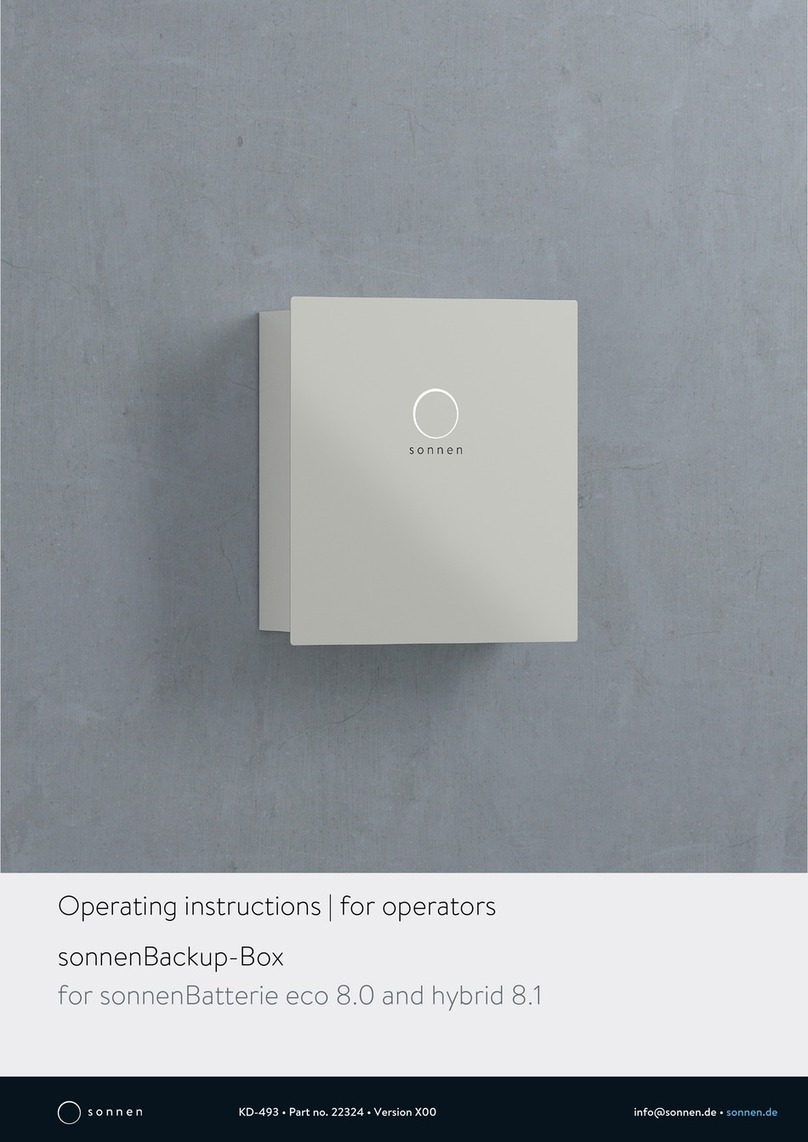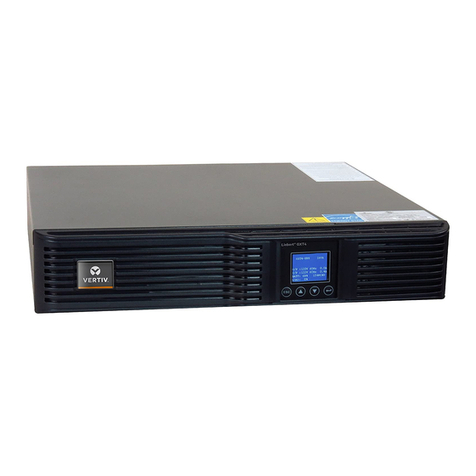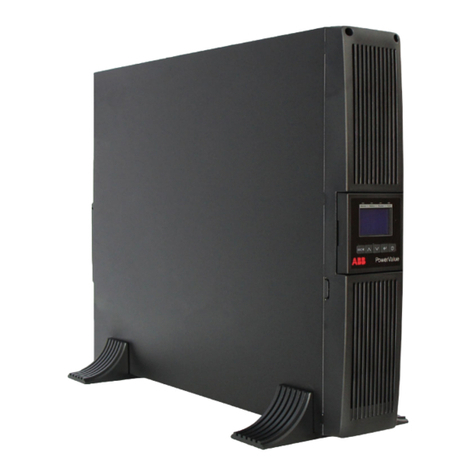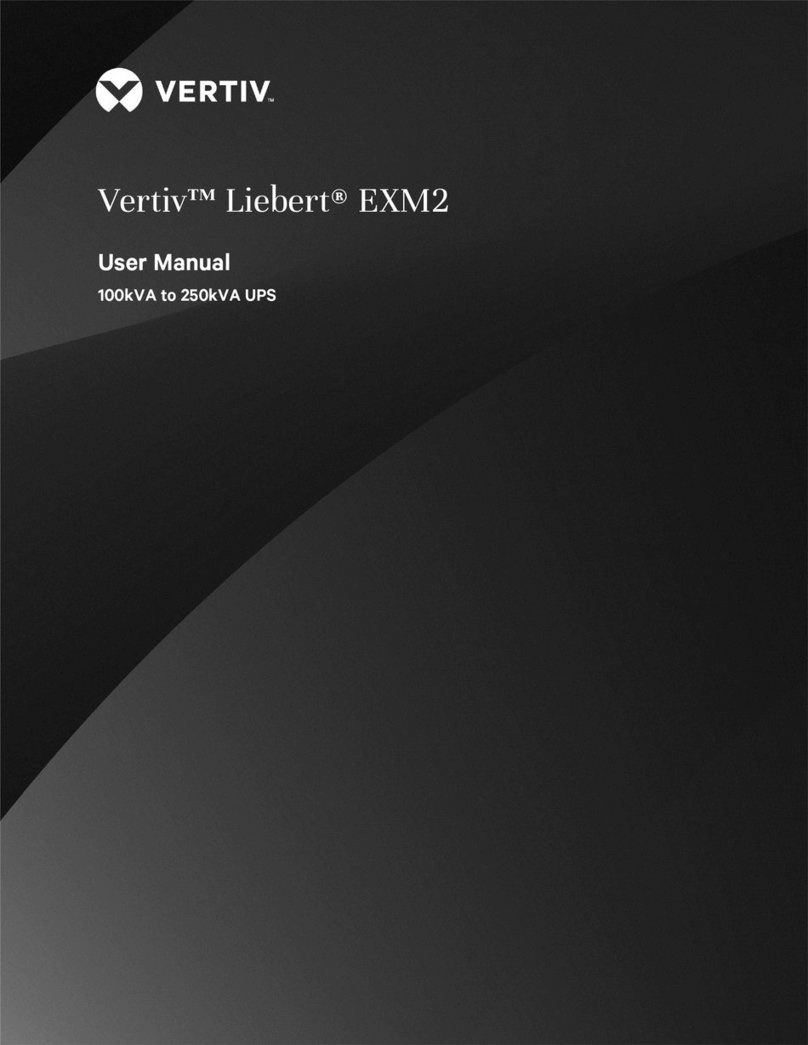Soltec SS-750L User manual

UPS + AVR
Uninterruptible Power System
User’s Manual
Line-Interactive Sine Wave
(Long backup models: SS-750L/1000L/1500L/2000L)
100%
80%
60%
40%
20%
NORMAL
BACK UP
LOW BATT.
OVER LOAD
-
--
--
--
-
+
++
+-
--
-
BATTERY
LOAD

TABLE OF CONTENTS
For Long run models: SS-750L/1000L/1500L/2000L only ------------- Page 3 – 4
1. INTRODUCTION
1.1 Overview 1.2 Battery replacement warning
1.3 Communication interface
2. MAIN FEATURES ------------------------------------------------------ Page 5
3. CAUTION ----------------------------------------------------------------- Page 5
4. INSTALLATION AND OPERATION ------------------------------- Page 6
4.1 Installation
4.2 Operation
4.3 Connecting the FAX machine
5. INDICATION AND CONTROL --------------------------------------- Page 7 – 8
5.1 Battery level and load level LEDs
5.2 Operation status LED
5.3 Audible alarm
5.4 Auto self-test function
5.5 DIP switch settings
5.6 Remote control
5.7 Reset the UPS
6. COMMUNICATION INTERFACE ---------------------------------- Page 9
6.1 The definition and setup for RS-232
6.2 The definition and setup for DB9 (optional)
7. TROUBLE SHOOTING ----------------------------------------------- Page 10
8. SPECIFICATIONS ----------------------------------------------------- Page 11
9. IMPORTANT SAFETY INSTRUCTIONS ------------------------ Page 12

FRONT PANEL FOR ALL MODELS
LEDs of battery voltage level and load level.
LED of operation status.
Control button.
2
1
3
100%
80%
60%
40%
20% 3
1
2
NORMAL
BACK UP
LOW BATT.
OVER LOAD
-
--
--
--
-
+
++
+-
--
-
BATTERY
LOAD

For long run models: SS-750L/1000L/1500L/2000L only
Rear Panel
Fuse.
Inlet of city power.
Outlets (NEMA/IEC).
RS-232 Interface.
DIP switch
Phone jacks for fax machine (optional by DIP switch).
Battery connector.
1
654
2
1
2
3
4
5
6
3
3 NEMA T
yp
e
IEC T
yp
e
7
07
00-
--
-
0+

1. INTRODUCTION (for long run models: SS-750L/1000L/1500L/2000L only)
1.1 Overview:
The series UPS is an advanced Line-Interactive Uninterruptible Power System
which produces pure sine wave power to your equipment; unlike the traditional
off-line UPS, the series provide very short transference when blackouts happen,
and zero transference from AC mode to battery mode or from battery mode to
AC mode. The voltage regulation performance of the series is similar to an
On-line UPS; however, the series provide efficiency over 98% under normal
power condition. Two charge modes, quick charge and trickle charge, are
provided to maintain the batteries in the best condition.
1.2 Battery replacement warning
The self-test function (by pushing the button) will inform you with an alarm
when the batteries are weak and require replacement.
1.3 DIP switches
The DIP switches allow you to adjust the UPS for different line voltages and
frequencies in different areas. It also allows you to enable the green power
function to shut down the UPS automatically if the load is less than 25W, and then
to extend the battery life.
1.4 Communication interface
A communication interface port for sensing input voltage, output voltage, battery
capacity, output power level, and UPS statuses are provided; through this port, you
can remote control the UPS for turning on and off by customized schedule and
setting the auto-test procedure.

2. MAIN FEATURE:
Line-Interactive structure.
Microprocessor based design.
‘Green Power’ design with auto on/off function.
RS-232 interface for communication.
Protection for overload, short circuit, & over heat.
Pure sine wave output.
Zero Transference.
3. CAUTION:
The UPS is designed to power computer loads and the associated peripheral devices,
such as monitors, modems, external H-Disk drivers, etc. To ensure the performance
of the UPS, Do Not load the UPS with laser printer, motor, or any type of inductive
load.
Connecting the UPS to a two-pole, three-wire grounding mains receptacle.
Connection with any other type of receptacle may result in a shock hazard and may
violate local electrical codes.
Do not allow water or any foreign object to get inside the UPS. And do not put objects
containing liquid on or near the unit.
Keep UPS away from fire or heating sources.

4. INSTALLATION & OPERATION:
4.1 Installation
Inspecting the packing carton for damage that may have occurred while in transit.
Immediately notify the carrier and place of purchase if any damage is found. Retain the
package for future use.
Plugging the power cord to a 3-wire grounding receptacle. If an extension cord must
be used between the UPS and the nearest wall outlet, use a 3-wire grounding type
rated for at least 20 Amps.
Connecting your equipment to the UPS. To ensure that your computer equipment will
be protected during a utility failure, it is important to make sure that the maximum
power need from the equipment is not over the rated capacity of the UPS. Red LED
will lighted up and alarm will beep if the load is over the rated value. Meantime, if the
overload is severe, the UPS will shut down immediately for protecting UPS itself.
4.2 Operation
4.2.1 After installation with normal city power, the UPS will charge the battery automatically,
and the status LED blinks green every 2 seconds. Please push the button about one
second on the front panel, then the UPS will give power to the outlets after a short-time
of self-test.
4.2.2 Pushing the button for 4 seconds, the UPS will turn off the power on the outlets. But, the
UPS will keep charging if city power is normal. To stop the charging, please pull out the
power cord to shut down the UPS completely.
4.2.3 During a blackout, push the button for entering idle mode (Ref. Indication Table),
then push again for one second, and the UPS will be turned on and enter into
backup mode. To turn off the power from UPS; please push the button for 4
seconds, then UPS status LED will blink orange every 2 seconds, wait for 5
seconds, and UPS will turn off the power automatically.
4.2.4 In idle mode, UPS will turn off the power automatically within 12 seconds during a
utility failure; while UPS will keep charging the batteries if the utility power is
normal. When utility power is normal, please pull out the power cord if you want
to turn off the UPS completely.
4.2.5 When “Green Power” function is enabled, the UPS will turn off the power within 30
seconds after blackout occurs with the power consumption lower than 25W.
4.3 Connecting the FAX machine:
When you are connecting a FAX machine or modem with the UPS, please also
connect the phone line through the UPS. The UPS may offer protection against
damaging power fluctuations and surges that travel through the phone line. The
UPS also offers a ring on function when the power is off. UPS power will be turned
on automatically when a ringing signal exists in the phone line, and the UPS will keep
power on until the FAX machine finishes receiving work, then the UPS will be
turned-off by the green power function. In a long-time blackout situation, you won’t
miss any FAX data by this function.

5. INDICATION AND CONTROL
5.1 Battery level and load level LEDs
The battery level LEDs show the voltage level both in back-up mode and in normal
mode. When the LED indicates 20% of the capacity in back-up mode, it means
that the UPS is going to shut down; for the length of backup time left, it will depend
on the load. While when all five LEDs light in normal mode, it means that the
battery is fully charged.
The load level LEDs show the percentage of added load by the UPS rated capacity.
When all five LEDs light, the UPS is over loaded.
5.2 Operation status LED
The status LED shows the UPS status, in the normal utility power duration, LED shows
Green. In the event of a utility outage, LED shows Orange. If the UPS is under fault
operation, LED shows Red.
5.3 Audible alarm
During a utility failure or fault operation, the UPS emits beep for warning. In back-up
mode, the beeping can be silenced by pushing the button. However, the warning of
low battery will still sound for urging user to leave computer without any data loss.
Basic Indication Table:
LED ALARM PERIOD STATUS
Green No Beep One flash every 2
sec. Utility Good
Orange No Beep One flash every 2
sec. Utility outage
Idle mode
Red No Beep One flash every 2
sec. Timer on, refer to Item
5.6
Green No Beep Continuously Normal
(Utility good)
One beep every 4
sec. Back-up
(No load)
Orange Yes, can be silenced
2 beeps every 4
sec. Back-up
(Loading)
Orange No, can Not be
silenced 4 beeps per sec. Battery Low
Normal/
Back-up
mode
Red Yes 8 beeps per sec. Battery NG.
5.4 Auto self-test Function:
In normal mode of UPS, turn on your computer and push the button on the front panel
for self-test. The UPS will simulate a power outage and transfer your load to the
UPS battery. If low battery warning sounds during the test, it means that the battery
set is weak and requires extended recharge. If battery NG warning sounds, it means
that the battery set is damaged and requires replacement.

5.5 DIP Switch Setting
Function Table of DIP Switch
SwitchNo. 1 2 3 4
Function Up Down Up Down Up Down Up Down
Voltage = 100V / 200V V V
Voltage = 110V / 220V V V
Voltage = 115V / 230V V V
Voltage = 120V / 240V V V
Frequency for DC Start 50Hz 60Hz
Green Power
(Enable/Disable)
Yes No
P.S.: Program setting active only after the UPS is re-started.
5.6 Remote Control:
The UPS can be set for daily shutdown/wake up. This command must be set
through the RS-232 interface. When this function is set, the timer inside the UPS
will begin to run, and the load will be turned off by the shutdown/wake up schedule.
During the period of turn off to the next turn on, the status LED blinks red every 2
seconds. .
5.7 Reset the UPS
If any abnormal condition occurs, and the item 4.2.1 ~ 4.2.4 can not be executed,
please push the button for at least 10 sec. until the status LED becomes orange,
then the UPS is reset.
12 34
DIP Switch

6. COMMUNICATION INTERFACE:
The UPS provides both computer interfaces, smart software (RS-232) and dry
contact (DB-9); by using different software and cable, the UPS shows different
monitoring function.
6.1 The definition and setup for RS-232 is as following:
Baud Rate : 2400 dps
Data Length : 8 bits
Stop Bit : 1 bit
Parity : None
Pin #6 : RS-232 data Tx out.
Pin #7 : Common of Pin #6 and Pin #9
Pin #9 : RS-232 data Rx In
6.2 The definition and setup for DB9 (optional) is as following:
Pin #2 : AC Power Failure
Pin #4 : Common GND of Pin #2 & Pin #5
Pin #5 : UPS Battery Low
Pin #6 : Turn off UPS
Pin #7 : GND of Pin6
The interface with computer is diagramed as above for your reference. Use Pin #4 as the
common of Pin #2 and Pin #5, Pin #2 and Pin #4 will become close loop from open when
the utility fails, Pin #5 and Pin #4 will become close loop from open when the battery level
is low.
The UPS will shut down itself when the high level signal from RS-232, sustained for
3 seconds, is applied between Pin #6 and Pin #7.
5 4 3 2 1
9 8 7 6

7. TROUBLE SHOOTING
Problem Possible Cause Action to Take
UPS no reaction while AC is
connected
1. Line cord plug is loose
2. Fuse on rear panel blown
(Inside the drawer of inlet)
3. Dead wall socket
1. Check the line cord plug
2. Replace fuse
3. Check wall socket with a
table lamp.
Power output is normal, UPS
emits continuous beep, status
LED shows RED.
UPS is over loaded Turn off UPS and unplug
excessive loads from UPS.
UPS emits continuous beep,
status LED show RED, & no
power on outlets.
UPS has shut down due to
overload.
Unplug excessive loads from
UPS, press button to reset the
buzzer, and turn on the UPS
again.
UPS does not provide expected
run time
1. Excessive loads connected at
UPS outlets.
2. Battery is weak and can not
provide enough capacity.
Do not operate the UPS, and
leave the UPS plugged in for 10
hours. Then, test it again, if
UPS still can not provide
expected run time, battery
should be replaced.
Button on front panel doesn’t
work
1. The CPU inside UPS is not
running correctly.
2. Button damaged.
1. Push the button for 10
seconds to reset the UPS.
2. Unplug line cord and all loads
from the UPS to let it shut
down automatically, and call
for service.
To push button for testing under
AC mode, UPS emits urgent
beep (8 beeps per sec.) and
RED LED blinks at the same
time.
Battery is weak and should be
replaced
Replace batteries.
UPS can not be turned on.
1. Battery polarity wrong
2. UPS fault
1. Check battery connection.
2. Call for service.

8. SPECIFICATIONS:
Specifications for long run models SS-750L/1000L/1500L/2000L:
MODEL / CAPACITY SS-750L
(750VA) SS-1000L
(1000VA) SS-1500L
(1500VA) SS-2000L
(2000VA)
Continuous Loading 500W 700W 900W 1200W
Max. Loading 750W 1000W 1500W 2000W
(< 30sec.) (< 30 sec.) (< 30 sec.) (< 30 sec.)
INPUT Voltage Frequency Selectable 100/110/115/120V 1ø or 200/220/230/240V 1ø
50Hz/60Hz Auto detect
Current (110V/220V) 8A / 4A 10A / 5A 16A / 8A 20A / 10A
Voltage 100/110/115/120V 1ø or 200/220/230/240V 1ø ±3% for Back-up Mode
<
<<
<±10% for AVR
Frequency 50Hz or 60Hz ± 0.1Hz (Selectable under DC start)
OUTPUT
Wave Form True Sine Wave
Current (110V/220V) 6.8A / 3.4A 9.1A / 4.6A 13.6A / 6.8A 18.2A / 9.1A
TRANSFER TIME Transfer Time <
<<
<3 ms
BATTERY Voltage 36V 48V 48V 72V
24V (optional) 36V (optional)
Level Ind. YES YES YSE YSE
Protection for reverse battery
polarity
YES YES YES YES
CHARGE Voltage 40.95V / 27.3V 54.60V / 40.95V 54.60V 81.90V
Maximum Current 6A 6A 6A 6A
LED / ALARM INDICATION LED Alarm
Normal city power GRN Lighting No beep
Back up Mode ORG Flashing B-B-----B-B----- (2 beeps/4sec.)
Abnormal Freq. of City power
(Frequency > 65Hz or < 47Hz)
ORG Flashing (quick) B-B-----B-B----- (2 beeps/4sec.)
(Transfer to backup mode)
Abnormal Voltage of City power
(Voltage > 126% or < 77%)
ORG Flashing (slow) B-B-----B-B----- (2beeps/4sec.)
(Transfer to backup mode)
Low Battery Alarm ORG Flashing B-B-B-B-B-B-------- (4 beeps/sec.)
Battery Fail Alarm RED Flashing B.B.B.B.B.B.B.B .. (8 beeps/sec.)
Over load Alarm RED Lighting B……….. (continuously)
Thermal Alarm RED Flashing G..... R.....
(G = 16beeps/2sec. R = silence / 2sec.)
LOAD LEVEL INDICATION YES YES YES YES
DC START / ALARM RESET YES YES YES YES
RS-232 INTERFACE YES YES YES YES
ENVIRONMENT TEMP. 0 - 37 ℃
℃℃
℃
ENVIRONMENT HUMIDITY 30-95% Non-Condensing
DIMENSIONS (L x H x W) 45 x 20 x 18 (cm) 45 x 20 x 18 (cm) 45 x 20 x 18 (cm) 45 x 20 x 18 (cm)
SHIPPING DIM. (L x H x W) 54 x 33 x 30 (cm) 54 x 33 x 30 (cm) 54 x 33 x 30 (cm) 54 x 33 x 30 (cm)
WEIGHT (N.W. / G.W.) 13.0/14.0 kgs 14.5/15.5 kgs 17.5/18.5 kgs 17.5/18.5 kgs

9. IMPORTANT SAFETY INSTRUCTIONS
ϳWhen replacing the batteries, use the same number and the same type of batteries.
ϳDo not dispose of batteries in a fire; the battery may explode.
ϳDo not open or mutilate the battery or batteries, released electrolyte is harmful to the skin and eyes.
ϳA battery can present a risk of electric shock and high short circuit current. The following
precaution should be observed when working on batteries.
* Remove watches, rings or other metal objects.
* Use tools with insulated handles.
ϳTo prevent an overbalance of this unit, with the installation the additional stabilizer are to mount at
the bottom side.
ϳThis unit should be installed from service personnel.
ϳThe equipment can be operated by any individuals with no previous experience.
ϳ“The socket-outlet shall be installed near the equipment and easily accessible.”
ϳ“With the installation of this equipment it should be prevented, that the sum of the leakage current
of the UPS an the connected consumer does not exceed 3.5mA.”
ϳAttention, hazardous through electric shock. Also with disconnection of this unit from the main,
hazardous voltage still may be accessible through supply from battery.
ϳThe battery supply should be therefore disconnected in the plus and minus pole through the from
the outer enclosure accessible battery fuses when maintenance or service work inside the UPS is
considered.
ϳThe lead acid battery may cause chemical hazard.
ϳThe battery presents a risk of electric shock and energy hazard.
ϳBatteries are to be disposed by the manufacturer or importer. Customers need to send them
back with no charge for disposal.
ϳElectrical hazard, the discharge time is about 5 min.
German wording:
ϳWenn Sie die Batterien austauschen, verwenden Sie bitte die gleiche Anzahl und den gleichen
Batterietyp.
ϳWerfen Sie niemals die Batterien in das Feuer, die Batterien könnten explodieren.
ϳÖffnen oder beschädigen Sie nicht die Batterien, ausfileβendes Elektrolyt ist schädlich für Haut
und Augen.
ϳEine Batterie kann eine Gefahz eines elektrischer Schlages und sehr groβer Kurzschluβströme
beinhalten. Folgenda Vorkehrungen soiiten getroffen warden, wenn Sie mit der Battery arbeiten.
* Entfernen Sie Uhren, Ring and andere metallische Objekte.
* Verwenden Sie Werkzeug mit isolierten Griffen.
ϳUm ein Umkippen dieses Gerätes zu verhindern, sind mit der Installation dieses Gerätes die
zugätalichen Stützen an der Unterseite dieses Gerätes anzubringen.
ϳDieses Gerät ist durch Elektrofachkräfte zu installieren.
ϳBedienung durch jedermann ohne dem Vorkenntnisse.
ϳ“Die Steckdose muβnahe dem Gerät angebracht und leicht zugänglich sein.”
ϳ“Bei der Installation dieses Gerätes ist darauf zu achten, daβdie Summe der Ableitstöme der
USV und der angeschlossenen Verbraucher den Maximalwert von 3.5mA nicht Überschreiten.”
ϳ“Vorsicht, Gefahr durch elektrischen Schlag. Auch nach Trennung von der
Netzeingangsspannung werde Teile innerhalb der USV von der Batterie gespeist und führen
gefährliche Spannung.
ϳBei Instandhaltungsarbeiten ist daher die Versorgung durch die Batterie an den von auβen
zugänglichen Sicherungshaltern in beiden Polen zu unterbrechen.”
ϳDie Blei-Akkumulatoren Können bei unsachgemäβer Handhabung chemische Gefahren
hervorrufen.
ϳDie Batterie birgt eine Gefahr eines elektrischen Schlages und sehr hoher Kurzschluβstroeme.
ϳBatterien werden durch den Hersteller oder Importeur entsorgt. Dazu muessen die Batterien
kostenfrei angeliefert werden.
ϳGegahr durch elektrischen Schlag, die Entladeit dieser Kondensatoren beträgt 5 min.
This manual suits for next models
3
Table of contents
Popular UPS manuals by other brands
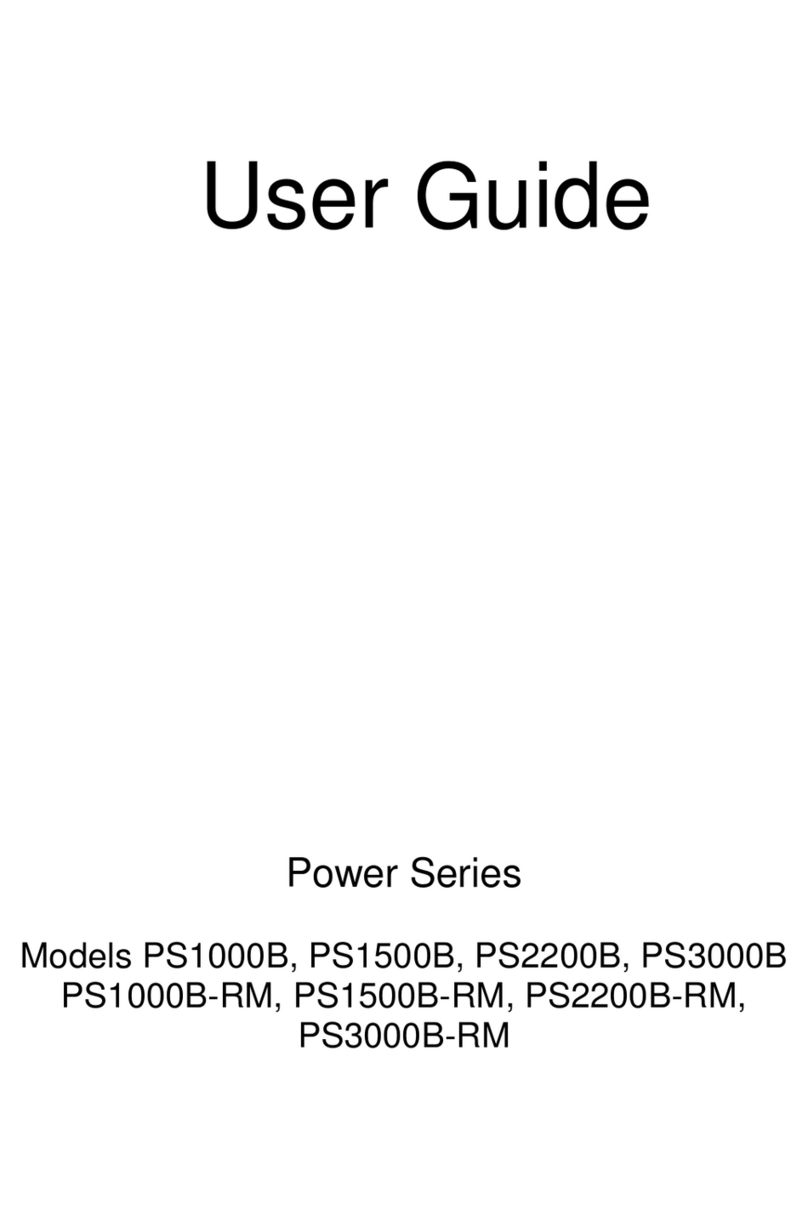
OPTI-UPS
OPTI-UPS Power Series user guide
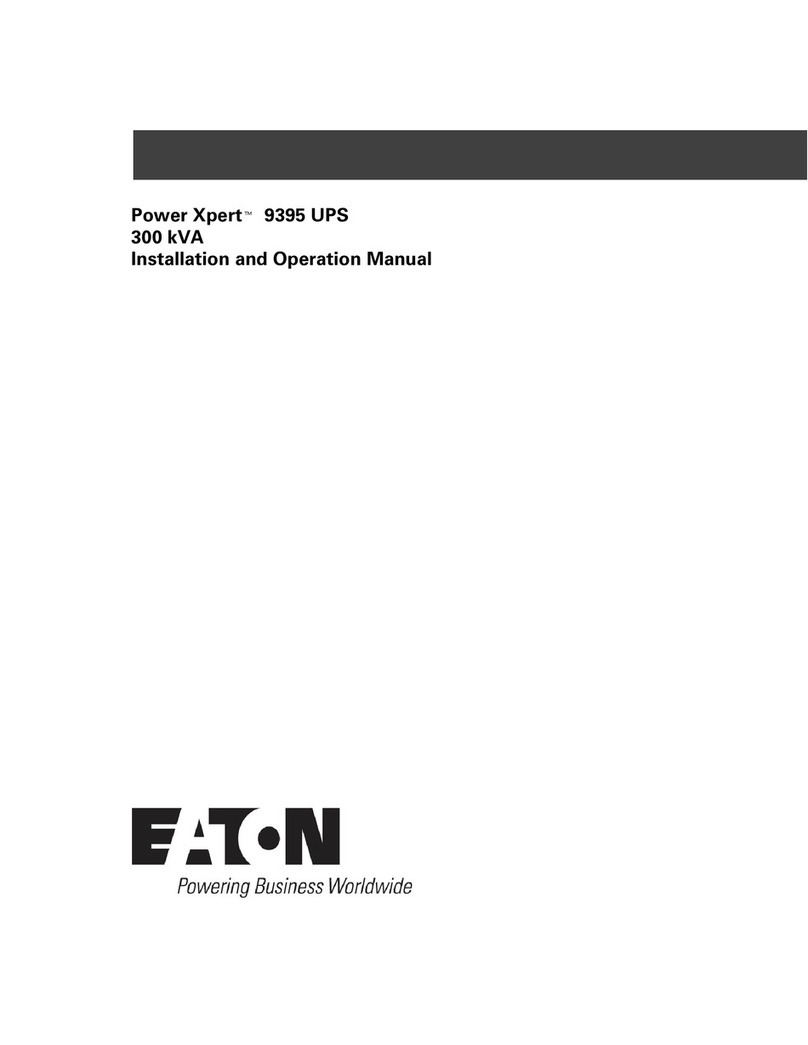
Eaton
Eaton Power Xpert 9395 Installation and operation manual
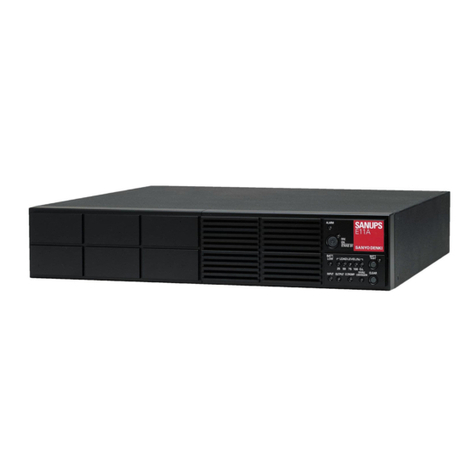
Sanyo Denki
Sanyo Denki SANUPS E11A Series instruction manual

Huawei
Huawei UPS5000-H-1200 Series user manual

Powertronix
Powertronix VELA 50-60 kVA user manual
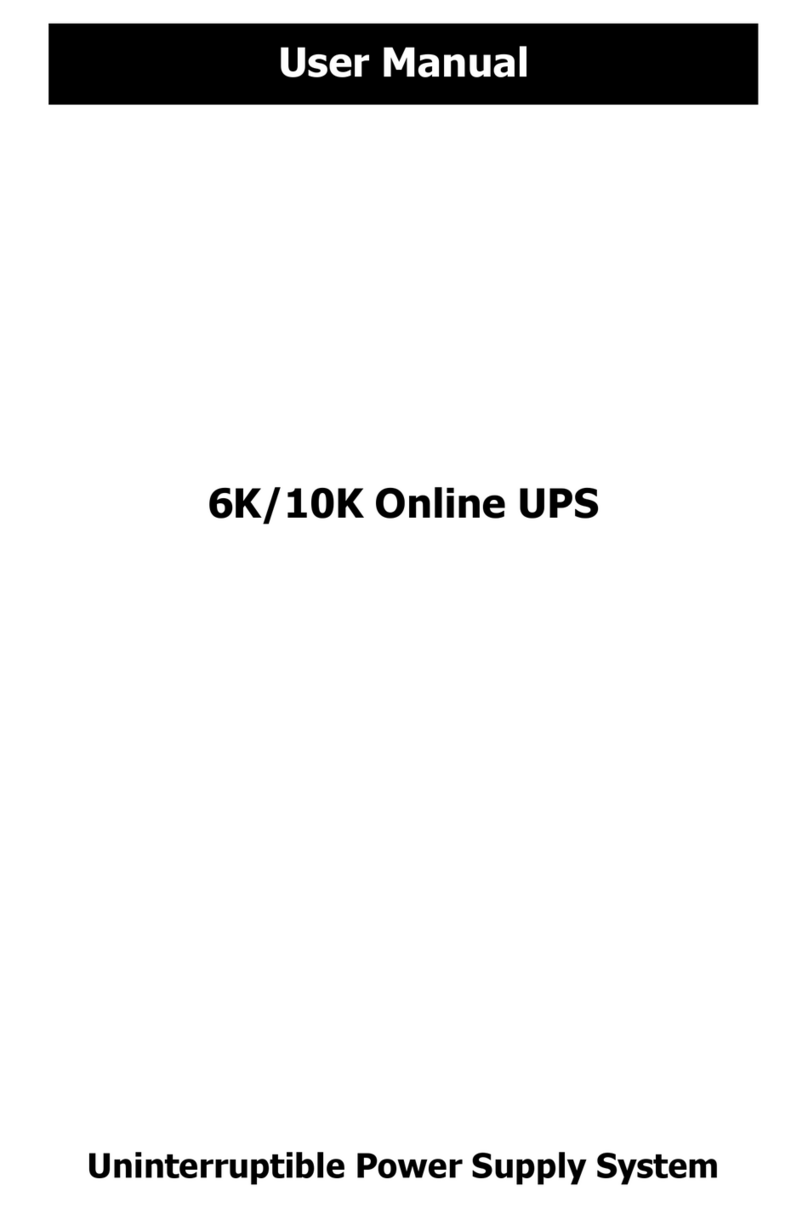
Voltronic Power
Voltronic Power 6K user manual
